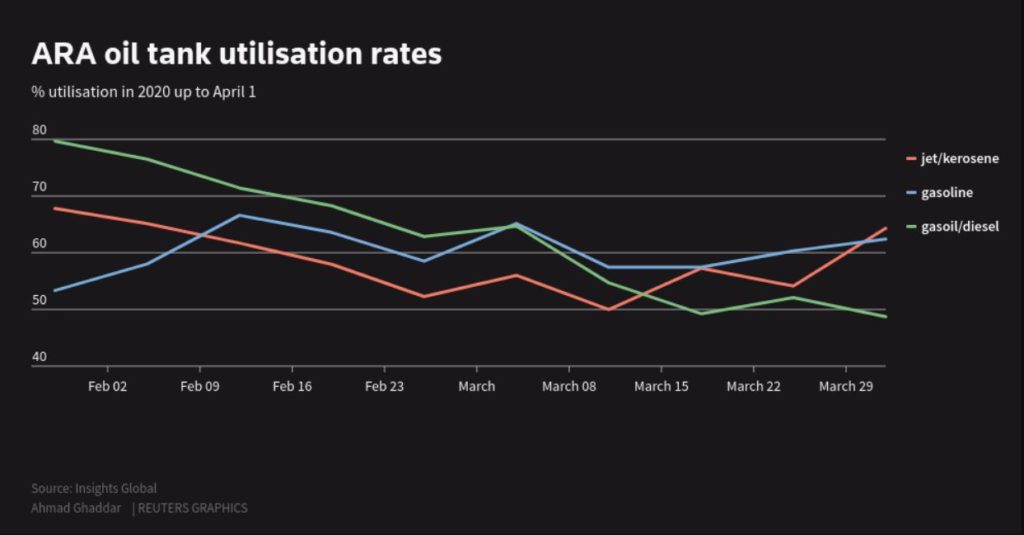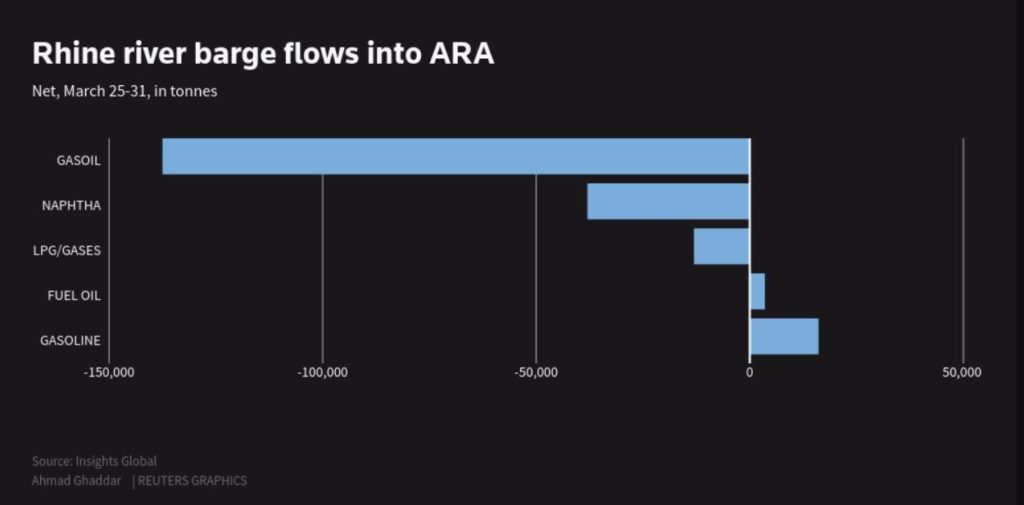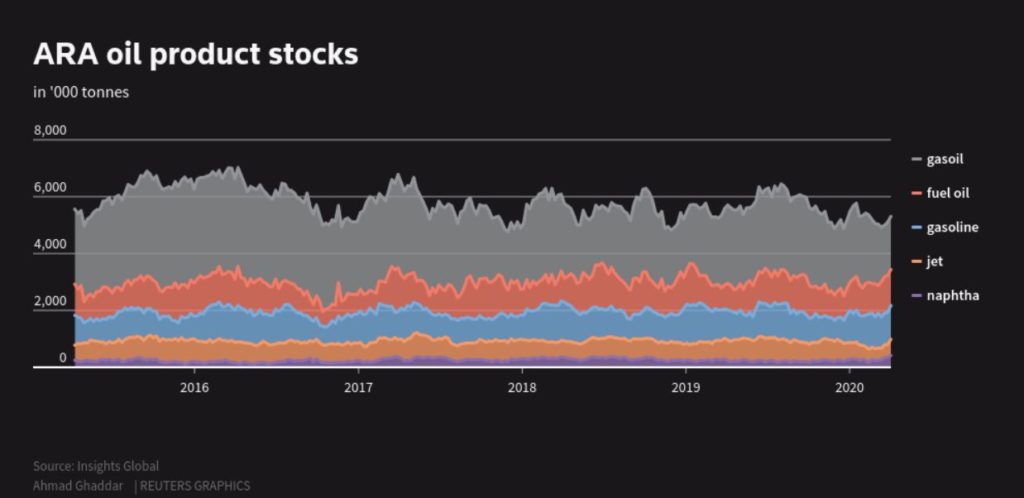Syed Shah usually buys and sells stocks and currencies through his Interactive Brokers account, but he couldn’t resist trying his hand at some oil trading on April 20, the day prices plunged below zero for the first time ever. The day trader, working from his house in a Toronto suburb, figured he couldn’t lose as he spent $2,400 snapping up crude at $3.30 a barrel, and then 50 cents. Then came what looked like the deal of a lifetime: buying 212 futures contracts on West Texas Intermediate for an astonishing penny each.
What he didn’t know was oil’s first trip into negative pricing had broken Interactive Brokers Group Inc. Its software couldn’t cope with that pesky minus sign, even though it was always technically possible — though this was an outlandish idea before the pandemic — for the crude market to go upside down. Crude was actually around negative $3.70 a barrel when Shah’s screen had it at 1 cent. Interactive Brokers never displayed a subzero price to him as oil kept diving to end the day at minus $37.63 a barrel.
At midnight, Shah got the devastating news: he owed Interactive Brokers $9 million. He’d started the day with $77,000 in his account.
“I was in shock,” the 30-year-old said in a phone interview. “I felt like everything was going to be taken from me, all my assets.”
To be clear, investors who were long those oil contracts had a brutal day, regardless of what brokerage they had their account in. What set Interactive Brokers apart, though, is that its customers were flying blind, unable to see that prices had turned negative, or in other cases locked into their investments and blocked from trading. Compounding the problem, and a big reason why Shah lost an unbelievable amount in a few hours, is that the negative numbers also blew up the model Interactive Brokers used to calculate the amount of margin — aka collateral — that customers needed to secure their accounts.
Thomas Peterffy, the chairman and founder of Interactive Brokers, says the journey into negative territory exposed bugs in the company’s software. “It’s a $113 million mistake on our part,” the 75-year-old billionaire said in an interview Wednesday. Since then, his firm revised its maximum loss estimate to $109.3 million. It’s been a moving target from the start; on April 21, Interactive Brokers figured it was down $88 million from the incident.
Customers will be made whole, Peterffy said. “We will rebate from our own funds to our customers who were locked in with a long position during the time the price was negative any losses they suffered below zero.”
That could help Shah. The day trader in Mississauga, Canada, bought his first five contracts for $3.30 each at 1:19 p.m. that historic Monday. Over the next 40 minutes or so he bought 21 more, the last for 50 cents. He tried to put an order in for a negative price, but the Interactive Brokers system rejected it, so he became more convinced that it wasn’t possible for oil to go below zero. At 2:11 p.m., he placed that dream-turned-nightmare trade at a penny.
It was only later that night that he saw on the news that oil had plunged to the never-before-seen price of negative $37.63 per barrel. What did that mean for the hundreds of contracts he’d bought? He frantically tried to contact support at the firm, but no one could help him. Then that late-night statement arrived with a loss so big it was expressed with an exponent.
The problem wasn’t confined to North America. Thousands of miles away, Interactive Brokers customer Manfred Koller ran into trouble similar to what Shah faced. Koller, who lives near Frankfurt and trades from his home computer on behalf of two friends, also didn’t realize oil prices could go negative.
He’d bought contracts for his friends on Interactive Brokers that day at $11 and between $4 and $5. Just after 2 p.m. New York time, his trading screen froze. “The price feed went black, there were no bids or offers anymore,” he said in an interview. Yet as far as he knew at this point, according to his Interactive Brokers account, he didn’t have anything to worry about as trading closed for the day.
Following the carnage, Interactive Brokers sent him notice that he owed $110,000. His friends were completely wiped out. “This is definitely not what you want to do, lose all your money in 20 minutes,” Koller said.
Besides locking up because of negative prices, a second issue concerned the amount of money Interactive Brokers required its customers to have on hand in order to trade. Known as margin, it’s a vital risk measure to ensure traders don’t lose more than they can afford. For the 212 oil contracts Shah bought for 1 cent each, the broker only required his account to have $30 of margin per contract. It was as if Interactive Brokers thought the potential loss of buying at one cent was one cent, rather than the almost unlimited downside that negative prices imply, he said.
“It seems like they didn’t know it could happen,” Shah said.
But it was known industrywide that CME Group Inc.’s benchmark oil contracts could go negative. Five days before the mayhem, the owner of the New York Mercantile Exchange, where the trading took place, sent a notice to all its clearing-member firms advising them that they could test their systems using negative prices. “Effective immediately, firms wishing to test such negative futures and/or strike prices in their systems may utilize CME’s ‘New Release’ testing environments” for crude oil, the exchange said.
Interactive Brokers got that notice, Peterffy said. But he says the firm needed more time to upgrade its trading platform.
“Five days, including the weekend, with the coronavirus going on and a complex system where we have to make many changes, was not a sufficient amount of time,” he said. “The idea we could have bugs is not, in my mind, a surprise.” He also acknowledged the error in the margin model Interactive Brokers used that day.
According to Peterffy, its customers were long 563 oil contracts on Nymex, as well as 2,448 related contracts listed at another company, Intercontinental Exchange Inc. Interactive Brokers foresees refunding $18,815 for the Nymex ones and $37,630 for ICE’s, according to a spokesman.
To give a sense of how far off the Interactive Brokers margin model was that day, similar trades to what Shah placed would have required $6,930 per trade in margin if he placed them at Intercontinental Exchange. That’s 231 times the $30 Interactive Brokers charged.
“I realized after the fact the margin for those contracts is very high and these trades should never have been processed,” he said. He didn’t sleep for three nights after getting the $9 million margin call, he said.
Peterffy accepted blame, but said there was little market liquidity after prices went negative, which could’ve prevented customers from exiting their trades anyway. He also laid responsibility on the exchanges and said the company had been in touch with the industry’s regulator, the U.S. Commodity Futures Trading Commission.
“We have called the CFTC and complained bitterly,” Peterffy said. “It appears the exchanges are going scot-free.”
Representatives of CME and Intercontinental Exchange declined to comment. A CFTC spokesman didn’t immediately return a request for comment.
The fallout for retail investors like Shah and Koller raises questions over whether they should’ve been allowed to take a position in oil contracts right before they expired, putting them in position to have to take possession of barrels of crude oil. Brokers have been grappling with how to shield clients, especially those with small accounts who are clearly incapable of taking physical delivery, since that day. Some, including INTL FCStone, have already blocked certain clients from touching the front-month oil futures contract.
Peterffy said there’s a problem with how exchanges design their contracts because the trading dries up as they near expiration. The May oil futures contract — the one that went negative — expired the day after the historic plunge, so most of the market had moved to trading the June contract, which expires May 19 and currently trades above $24 a barrel.
“That’s how it’s possible for these contracts to go absolutely crazy and close at a price that has no economic justification,” Peterffy said. “The issue is whose responsibility is this?”
By Matthew Leising, 8 May 2020



